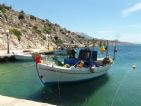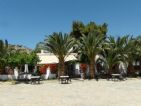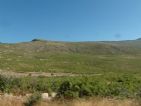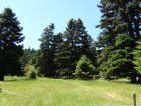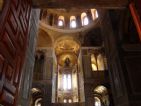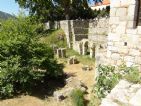
Between Aspra Spitia and Ghermano (Porto Germeno)
Comparisson reports are under license of:

Lo que dice el Arxiduc:
“A point with rocks above separates the first inlet in the bay from the second one with a deep port completely protected by Cape Trakhila ( Trachilos). In the back of this inlet is a pretty valley full of olive trees, and, near the shore, a small stone dock where fishermen tend to anchor their boats. There is also a small church with a projected apse and an ikonostasi icon corner made of a few planks. A few small windows serve to light the inside.”
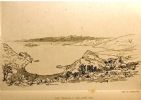 “It’s worth climbing conical Siro Hill which is made of lime and limestone. You can see a small bit of Parnassus in addition to Sotiro Steno Bay with the coast of the peninsula in the background. Goatherds lead their animals to fields here where they eat new shoots of small Holm oaks, gorses, mastics and Juniperus phonicea, all of which grow here. They’re pretty goats, especially dark brown and with thin horns, similar to the goats found in Mallorca.”
“It’s worth climbing conical Siro Hill which is made of lime and limestone. You can see a small bit of Parnassus in addition to Sotiro Steno Bay with the coast of the peninsula in the background. Goatherds lead their animals to fields here where they eat new shoots of small Holm oaks, gorses, mastics and Juniperus phonicea, all of which grow here. They’re pretty goats, especially dark brown and with thin horns, similar to the goats found in Mallorca.”
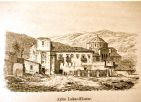
Datos proyecto Nixe III:
We continue towards Corinth and enter the following bay, Dobrena Bay. Upon entering we find ourselves with a strong 30-knot wind from the northwest. You can see and hear some of the effects in the video.
We stop at the small Ayos Yioannis cove. There are only five houses here, one of them a restaurant.
From here, the local fisherman and the restaurant’s owner, Giorgi, takes us towards Osios Lukas which is some forty kilometers away. We’re surprised by the contrast between the southern slopes, which suffered from a fire a few years ago, and the northern side, full of fir trees and beehives.
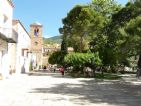 We reach Osios Lukas and can see some differences compared to the Archduke’s drawings. The tower has been changed, there are new buildings in front of the tower, and we can’t see the building that was once attached to the tower just above the entrance. There is also a new building, a museum, in front of the church. By contrast, the latter is practically identical to the Archduke’s rendering.
We reach Osios Lukas and can see some differences compared to the Archduke’s drawings. The tower has been changed, there are new buildings in front of the tower, and we can’t see the building that was once attached to the tower just above the entrance. There is also a new building, a museum, in front of the church. By contrast, the latter is practically identical to the Archduke’s rendering.
The monastery receives a lot of visitors, and it is well known that a lot of men in the area are called Lucas in honor of the saint. Many of the changes we see can be explained by the bomb which was dropped here during the Second World War. We can also see that some doors still bear the scars of shots. In this photo, we can see where the bomb landed.








